At the WWDC keynote on June 5, Apple unveiled the new features coming in iOS 17 this fall. Among them are a new app called Journal, Live Voicemail, and a new way to use Stickers, among dozens of other smaller changes.
This free software update will bring a raft of interface tweaks, bug fixes, and new features. It’s like getting a new iPhone without paying a penny. In this article, we discuss everything you need to know about iOS 17. We cover its release schedule and when you can expect the beta and final versions to come out; how to get it when it does; the models of iPhone that are likely to be able to run iOS; and the features we expect and hope to be added in the new OS.
Update June 21: Apple is expected to release the second developer beta for iOS 17 this week. Learn how to get it on your iPhone right now.
iOS 17 release date: When will iOS 17 arrive?
iOS 17 was announced and demonstrated at WWDC 2023 on June 5 but it won’t be rolled out to iPhones across the world until the fall, almost certainly in mid-September. (The last time an iOS update was released outside September was iOS 5 back in October 2011.) It’s likely to follow closely on the heels of the iPhone 15 launch event. There was a gap of five days between the iPhone 14 and iOS 16 update in 2022 and six days in 2021. Over the past several years, the release of the new version of iOS has been fairly consistent:
iOS 16: Monday, September 12, 2022iOS 15: Monday, September 20, 2021iOS 14: Wednesday, September 16, 2020iOS 13: Thursday, September 19, 2019iOS 12: Monday, September 17, 2018
Based on recent history, we predict an iOS 17 launch date of Monday, September 11, or Monday, September 18.
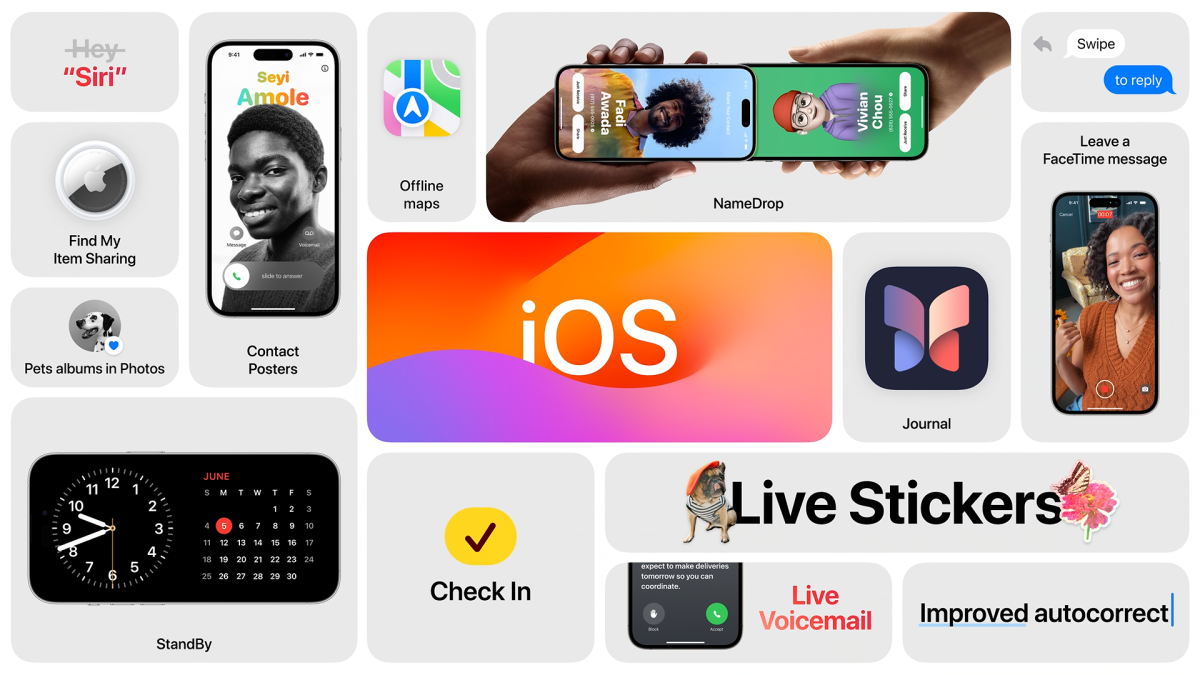
Apple WWDC 2023
iOS 17 beta release date: When will iOS 17 beta arrive?
Before the full version arrives in the fall, a series of beta versions of iOS 17 will be released to testers, beginning with the first developer beta on the first day of WWDC 2023. The developer beta of iOS 17 arrived on June 5, following the keynote event.
Previously access to Apple’s developer betas required membership in Apple’s Developer Program, which costs $99 a year. However, in 2023 Apple changed this requirement to include people who have free developer accounts (which previously only gave them access to Xcode and the Developer forums). This means you no longer need to be a paid member of Apple’s developer program to get the developer beta. If you want to try out the developer beta, you just need to register as a developer first.
However, developer betas are not intended for anyone who isn’t a developer. Apple is still going to be running the Public Beta program for IOS 17, which is more appropriate to general users as these updates usually come a few days after the developer update and are therefore a little less likely to break your iPhone. The public beta is likely to be released around the beginning of July.
Timeline:
June 5: iOS 17 is announced at WWDC, and the first developer beta is released.July 2023: Apple releases the first public beta of iOS 17.June to September 2023: Apple releases a series of additional developer and public betas.Early September 2023: The iPhone 15 is announced.Mid-September 2023: The final public version of iOS 17 is released.
iOS 17: How to install the beta and full version
Once the final release comes out, installing iOS 17 will be a breeze. Open the Settings app on your iPhone and go to General> Software Update; iOS will check for any available updates and guide you through the process of installing them. You simply have to follow the instructions, which we explain in our iOS updating guide. And it’s easier still if you’ve turned on Automatic Updates, which you can do from the same screen.
But you can also install betas both leading up to the main release of iOS 17 and through the year following its release. There are two types—developer betas, which arrive first, and public betas, which generally show up a day or two later.
Installing the developer beta: If you want to install a developer beta, you need, unsurprisingly, to be a registered Apple software developer, which has both free and paid ($99/£79) versions. Since June 2023 Apple has opened the beta to all registered developers–so everyone can get the earliest possible access to the iOS 16 beta. To sign up for an account and install the developer beta you need only follow these steps:
Download the Apple Developer App from the App Store. Open the app and click on Account. Tap on Sign In and sign in using your usual Apple ID.
Once you are logged in you should see the beta in General> Software Update> Beta Updates. You need to be running iOS 16.5 or later for this to work. We cover this process in more detail in our How to get the iOS 17 beta article.
Our advice is that rather than installing the developer beta you should wait until the public beta arrives to avoid too many complications.
Installing the public beta: A better option for most would be to go for the public beta instead: these come out later than the developer betas, but they are free, and still give you bragging rights with your friends. Apple has changed the way betas are installed in iOS 16.4, and they are now tied to Apple IDs rather than profiles, so the process is a little friendlier than before and just requires joining the beta program with an Apple ID on any device.
In either case, it’s important to stress that betas are not finished software and are likely to contain bugs. That’s kind of the point of testing them. So be prepared for things to go wrong, maybe catastrophically, and we don’t recommend that you install a beta on your primary device. If that doesn’t put you off, follow our iOS beta installation guide. For more on joining the program read: How to join Apple’s beta program and try out new software.
iOS 17 compatibility: Which iPhones will be able to run iOS 17?
iOS 17 will not support iPhone 8 or the iPhone X. The iPhone 8 and 8 Plus, and the iPhone X all came out the same year. They are all able to run iOS 16 though, so they should get support through security updates for at least another year. The following iPhones get support for iOS 17, although it is possible that not all of them will support all of the new features:
Phone 14iPhone 14 PlusiPhone 14 ProiPhone 14 Pro MaxiPhone 13iPhone 13 miniiPhone 13 ProiPhone 13 Pro MaxiPhone 12iPhone 12 miniiPhone 12 ProiPhone 12 Pro MaxiPhone 11iPhone 11 ProiPhone 11 Pro MaxiPhone XSiPhone XS MaxiPhone XRiPhone SE(2nd gen or later)
Even if your chosen device is granted another year of software support, it’s worth noting that older iPhones may not get the full range of new features. Last year, for example, the iPhone 8 and iPhone X missed out on a bunch of cool stuff due to their older processor. For more information take a look at every version of iOS released so far and find out which version of iOS your iPhone supports.
iOS 17: New features
There were many new features in iOS 16, including a redesigned Lock Screen, unsending iMessages, and the iCloud Shared Photo Library, but what is coming in iOS 17? Rumors suggested that there would be “fewer major changes” than usual–but Apple has announced numerous new features for the update:
You may like to read: iOS 17 features didn’t make the WWDC keynote and iOS 17 features that make us want to upgrade.
Journal
This is a brand new app that builds on Memories in Photos to bring a new way to relive special moments, remember and write about experiences with text, location, and photos, and more. There is also a Suggestions API for developers to use in their apps.
StandBy
This seems to borrow from the Apple Watch. Put the phone in landscape on a stand at night and see the time with a clock and a range of clock styles. You can also shuffle through your best photos, display widgets, and see Live Activities, like game scores. You can also choose Night Mode to display red text and minimize eye strain at night.

Apple
Contact Posters
This will let you personalize how you appear in calls and on your contact card. You can customize your poster with images, fonts, and colors. This works with Call Kit so it can be used in third-party VOIP apps.
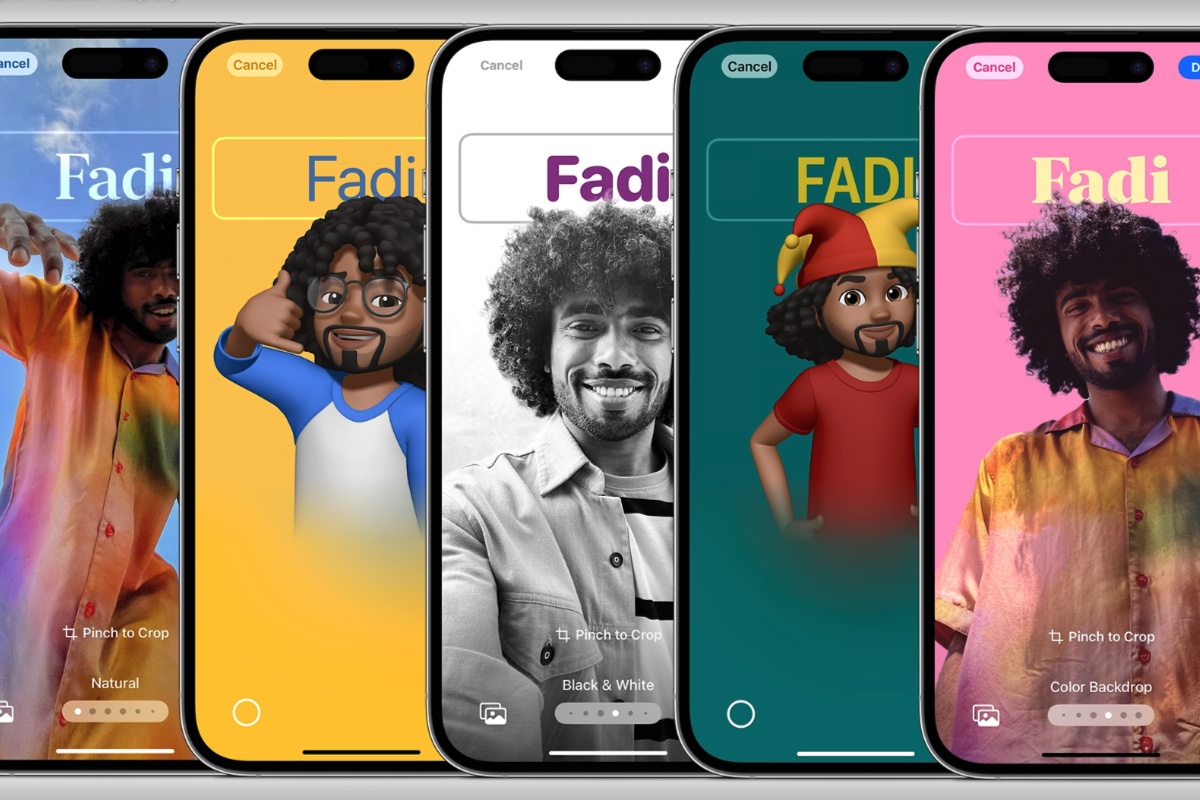
Apple
Live Voicemail
If someone calls and leaves a message you will see a live transcript as they speak. That way you can see if you want to pick up or not.
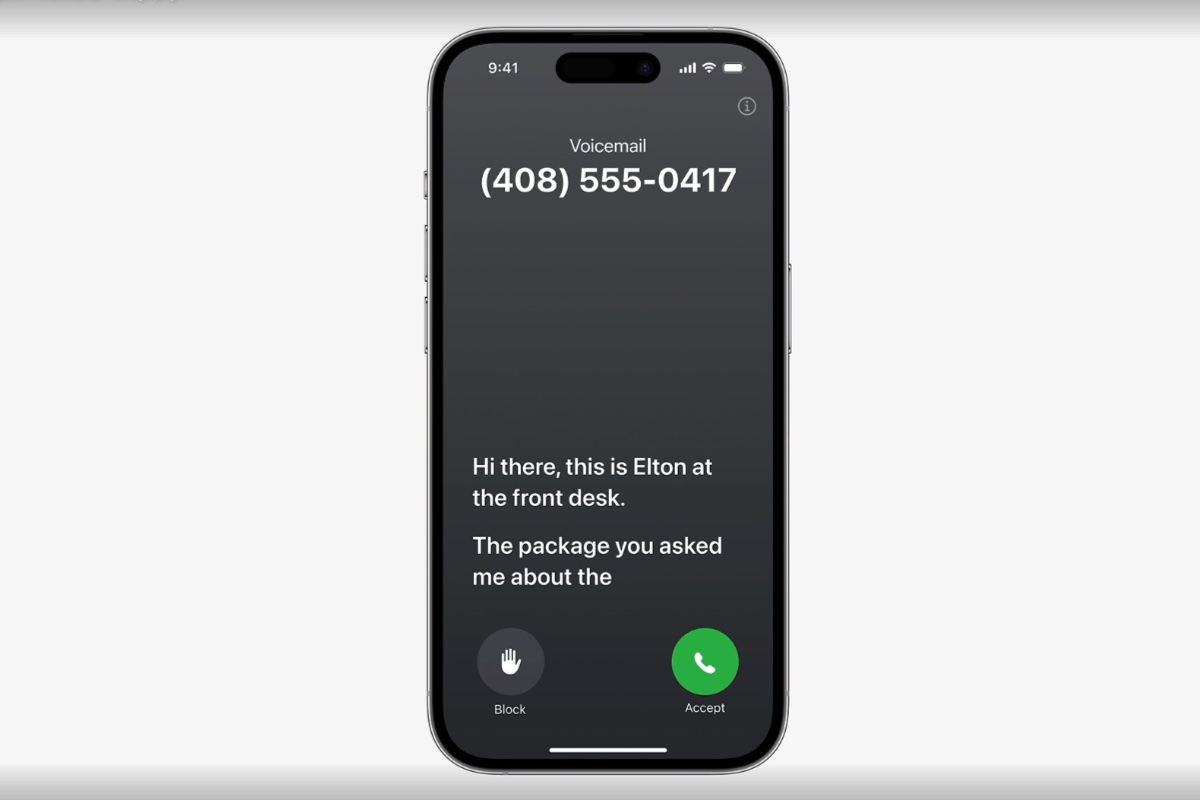
Apple
FaceTime
Apple is adding the ability to leave a video message in the FaceTime app when people don’t answer.
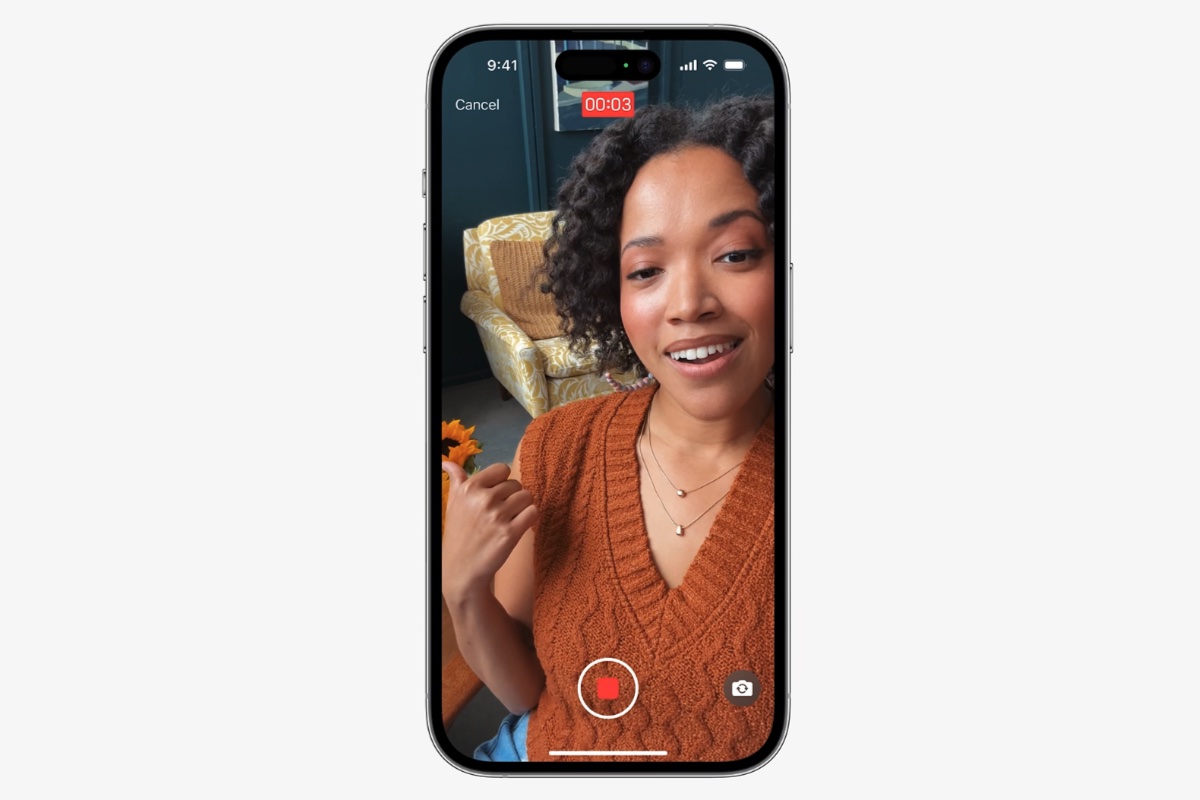
Apple
Messages
The Messages app will be faster, and search filters will let you add terms to a search to narrow the results. You’ll also be able to jump to the first unread message in a group chat, swipe to reply on any bubble, and automatically transcribe audio messages.
A new Check In feature will also let Family and Friends know if you’ve made it to a destination safely. Messages can recognize if you aren’t making progress toward the destination and prompt you to respond. If you don’t, it will share information with the selected contact, including your location, battery level, and cell service status.
Stickers
All emoji across iOS 17 are now stickers that can be resized. Subjects from photos can be lifted out of photos and turned into stickers. You can turn live animated photos into Live Stickers.
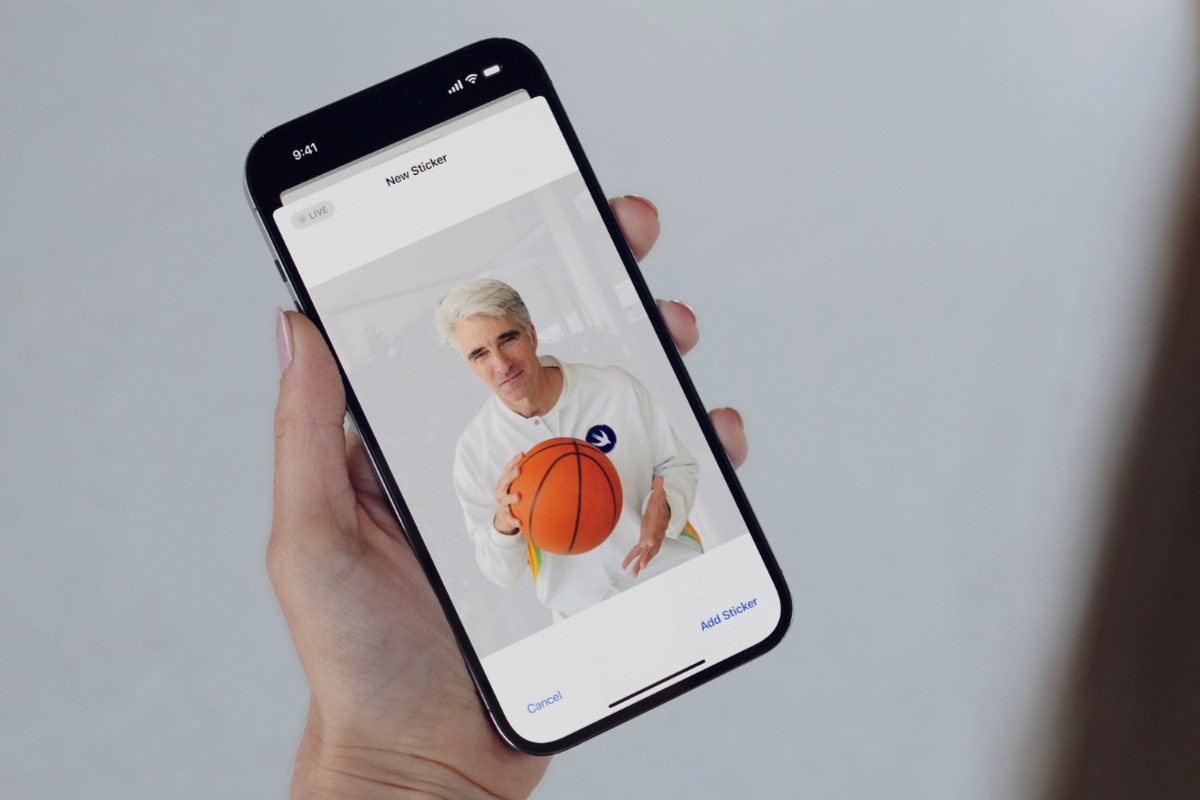
Apple
AirDrop
Apple is changing the way AirDrop works it will be much simpler to use. You only need to bring your phones close together and you will be able to share information. You can easily choose the phone numbers and email addresses you want to share on an iPhone or Apple Watch. For example, if you want to share photos, just bring your phones close together.
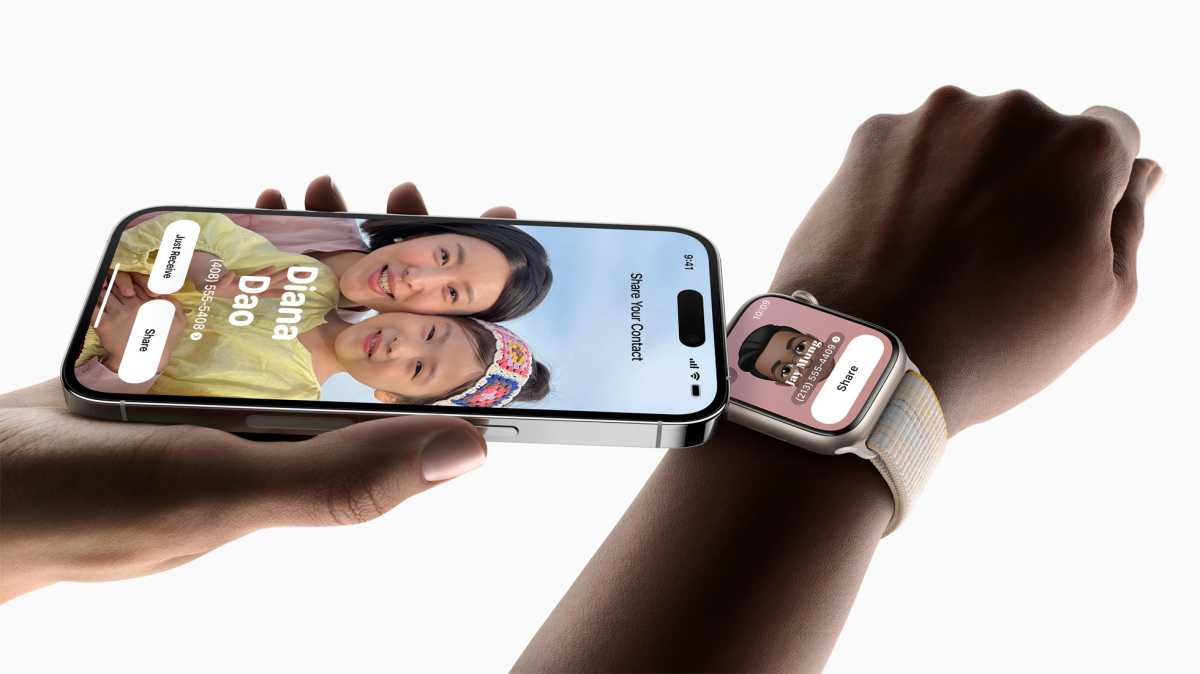 You can even AirDrop to an Apple Watch.
You can even AirDrop to an Apple Watch.
Apple
Keyboard and Dictation
Autocorrect will be “more accurate than ever.” Tap the underlined word to get the option to revert to the word you had typed. You can get predictions in line as you type and just tap the space bar to add them. Machine learning will also learn your writing style and adapt autocorrect accordingly. Additionally, Dictation leverages a new speech recognition model to make it even more accurate.
Siri
You no longer need to say, “Hey” every time you want to summon Siri. You can also make multiple requests in the same command.
Photos
The People album in iOS 17 will be able to use on-device machine learning to recognize “more photos of a user’s favorite people” as well as cats and dogs.
Smaller features
There are also numerous smaller features that Apple didn’t mention in the keynote that are worth knowing about, including improvements to Spotlight search, Notes, Autofill, and Apple Music.
Apple ID passkey
Apple announced passkey support in iOS 16 but it’s going mainstream in iOS 17. In iOS 17, iPadOS 17, and macOS Sonoma, you’ll be able to log into your Apple ID with a passkey using Face ID or Touch ID on your iPhone instead of a password.
iOS 17: Third-party app stores and sideloading
Ahead of WWDC, there were reports that Apple will start to open up the iPhone in iOS 17, allowing the distribution of apps outside of Apple’s own App Store, the use of NFC for touchless payments beyond Apple Pay, browsers that don’t have to use Apple’s Webkit rendering engine, and more. It’s all necessary to comply with the EU’s new Digital Markets Act, and the expectation is that it will only apply to those iPhones running iOS 17 in the regions covered by EU law.
Apple didn’t discuss the changes at WWDC, which isn’t very surprising. Furthermore, there are no references to sideloading or third-party app store on the iOS 17 website. However, that doesn’t mean those changes aren’t coming in iOS 17, either at launch or sometime in 2024.
>>> Read full article>>>
Copyright for syndicated content belongs to the linked Source : MacWorld – https://www.macworld.com/article/1519552/ios-17-release-date-features-compatibility-beta.html






























